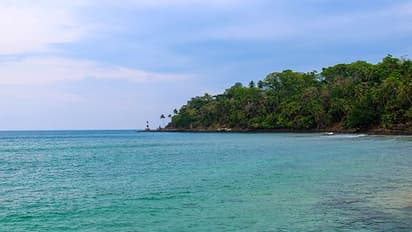Climate alert! Massive coral bleaching in Andaman sea

Synopsis
Detailed studies during pre and post bleaching surveys by ZSI scientists found that 23.58 per cent of the live cover were lost due to this massive bleaching in 2016 in the Andamans
A massive coral bleaching was reported in the coastal areas of the Andaman sea, said the Zoological Survey of India (ZSI) chief director Dhriti Banerjee, adding that in a study conducted by the organization it was found that the bleaching is up to 83.6 per cent and has happened due to the impact of the El Nino event and increased sea surface temperature in 2016.
Also Read: 5 vineyards that every wine lover must visit in India
"The detailed studies during pre and post bleaching surveys by ZSI scientists found that 23.58 per cent of the live cover were lost due to this massive bleaching in 2016 in the Andamans," Banerjee said
How heat stress is impacting coral reefs
A gradual decrease in the live coverage of hard corals from 32.3 per cent in 1978 to 29.5 per cent in 2019 was reported by a recent publication of Global Coral Reef Monitoring Network 'Status of Coral Reefs of the World: 2020', the ZSI director said, adding that another study of 2021 pointed at the rapid decline in coral calcification, mostly due to heat stress.
Destructive impact of El Nino
The destruction by El Nino has been reported and documented through several bleaching events across the world. A loss of 16 per cent of the world's reef cover was reported in 1998 along with the greatest mortality report of 70 per cent from the Indian Ocean region. There were reports of 93 per cent bleaching of the coral colonies followed by 22 per cent of dead corals from the Great Barrier Reef in 2016, Banerjee said, quoting various reports on El Nino impact.
Stressing the problem, the ZSI chief said that these vulnerable ecosystems are on the verge of facing frequent threats whereas their services towards sustainable and healthy reef habitats, coastal protection, development of tourism and recreational benefits and providing economic support to the coastal population for their sustainable livelihood are exceedingly high. "It is high time for us to make ourselves aware enough to conserve this fragile ecosystem before their mass extinction," she said without mincing the words.
Destruction reported so far
A total of 83.6 per cent of scleractinian corals or hard corals were bleached from the Bay islands between April and May 2016. Maximum bleaching of 91.5 per cent was recorded in the Andaman Sea region of South Andaman; in the North Andaman region, it was 83.2 per cent. The Bay of Bengal coastal areas of South Andaman reported 74.2 per cent of bleached corals, the study of 2021 pointed at the rapid decline in coral calcification said.
How deep was bleaching
According to the research, the bleaching was recorded up to the maximum depth of 30 m. The highest impact of bleaching was recorded at the depth range of 0-6 m followed by 6-15 m.
The theory that the luxuriant mangrove ecosystem would buffer the heat waves and keep the corals of North and Middle Andaman unbleached and healthy was not yet proven by any experimental studies, an official said. Mangroves are known to purify water by absorbing nutrients from runoff as well as harmful algal blooms to keep them clear, which is a prerequisite for healthy coral reef ecosystems. Mangroves are also prime organisms that absorb carbon from carbon dioxide.
Also Read: The 'Seven Summits' goal: Expedition to Mount Denali
Stay updated with the Breaking News Today and Latest News from across India and around the world. Get real-time updates, in-depth analysis, and comprehensive coverage of India News, World News, Indian Defence News, Kerala News, and Karnataka News. From politics to current affairs, follow every major story as it unfolds. Get real-time updates from IMD on major cities weather forecasts, including Rain alerts, Cyclone warnings, and temperature trends. Download the Asianet News Official App from the Android Play Store and iPhone App Store for accurate and timely news updates anytime, anywhere.